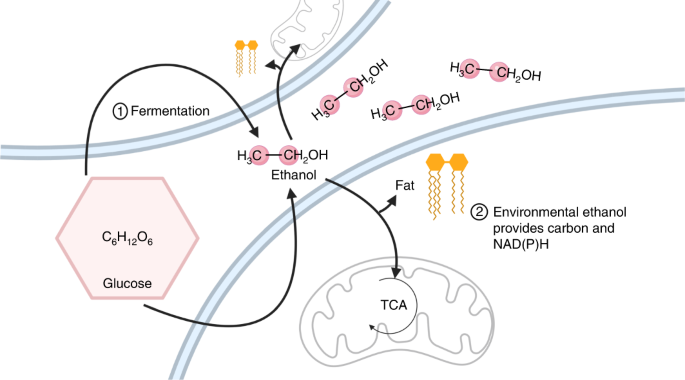Glucose Feeds the Tricarboxylic Acid Cycle via Excreted Ethanol in Fermenting Yeast
Themes: Conversion
Keywords: Metabolomics
Citation
Xiao, T., Khan, A., Shen, Y., Chen, L., Rabinowitz, J.D. Aug. 15, 2022. “Glucose Feeds the Tricarboxylic Acid Cycle via Excreted Ethanol in Fermenting Yeast.” Nature Chemical Biology 18, 1380-1387. DOI: 10.1038/s41589-022-01091-7.
Overview

Ethanol and lactate are typical waste products of glucose fermentation. In mammals, glucose is catabolized by glycolysis into circulating lactate, which is broadly used throughout the body as a carbohydrate fuel. Individual cells can both uptake and excrete lactate, uncoupling glycolysis from glucose oxidation. Here we show that similar uncoupling occurs in budding yeast batch cultures of Saccharomyces cerevisiae and Issatchenkia orientalis. Even in fermenting S. cerevisiae that is net releasing ethanol, media 13C-ethanol rapidly enters and is oxidized to acetaldehyde and acetyl-CoA. This is evident in exogenous ethanol being a major source of both cytosolic and mitochondrial acetyl units. 2H-tracing reveals that ethanol is also a major source of both NADH and NADPH high-energy electrons, and this role is augmented under oxidative stress conditions. Thus, uncoupling of glycolysis from the oxidation of glucose-derived carbon via rapidly reversible reactions is a conserved feature of eukaryotic metabolism.
Data
- Equimolar/Equicarbon Labelings
- Strain Labelings
- Glycolitic Intermediates
- Pool Size